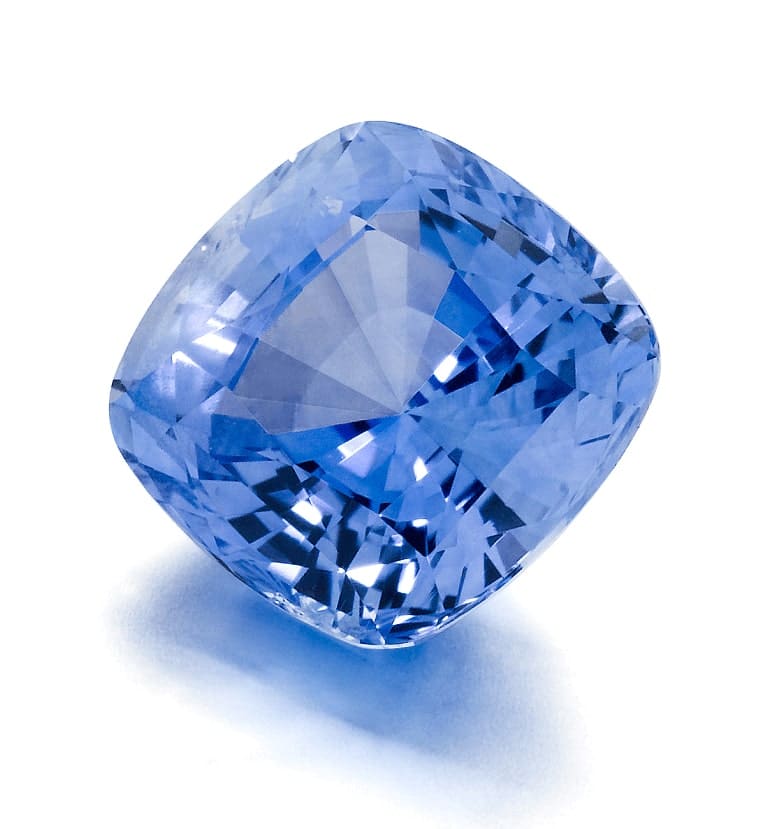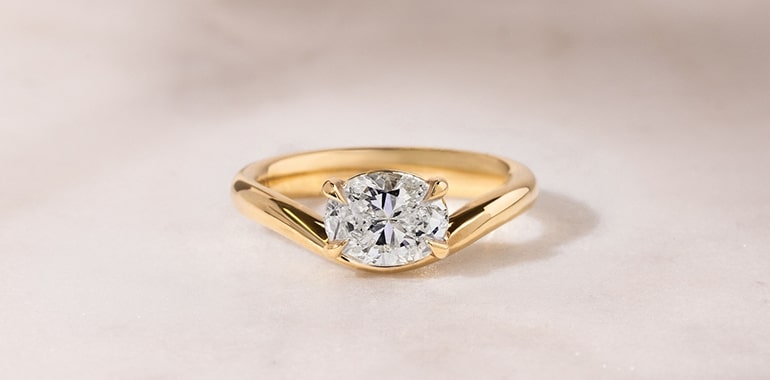Sapphire
Sapphires offer a rainbow of colour options and due to their hardness and wearability, are ideal for use in fine jewellery. The most well known type of sapphire is the blue sapphire, which can range in colour from deep royal blue (known as Australian Blue) to light periwinkle shades.
It’s important to note that blue is not your only option when purchasing a sapphire. Blue sapphires are actually part of the larger corundum family, a type of crystal that also includes the gemstone Ruby. Rubies are red corundum, and all other corundum, from pink and green to yellow and blue, are known as sapphires. Sometimes, two of these colours can be visible in one stone creating a variety known as Parti sapphires.
Sapphire is the birthstone of September. The value of sapphires comes from the intensity of their colour and clarity. Deeply coloured natural sapphires are the most valuable of all sapphires. Sapphires of lighter hues or less intense colour can be heat treated to achieve more intense colours, and can often be a very affordable option for jewellery.
Improving the quality of gemstones by treating them is common practice. Some treatments are used in almost all cases and are therefore considered acceptable. Treatments of gemstones should be declared by the seller at all times.

Diamonds are the hardest substance on earth, graded 10 on the Moh’s Hardness Scale. Sapphires, or corundum, are graded 9 on this scale, and are thus very resistant to scratching and chipping and ideal for use in jewellery, particularly jewellery such as engagement and wedding rings that are worn daily.
Where do sapphires come from?
Sapphires are mined mainly in Sri Lanka, Thailand, Australia, Madagascar and India.
Areas in northern New South Wales and Southern Queensland are famous for their navy blue, green and yellow varieties. Mining centred at Anakie has spread to the surrounding sapphire-bearing fields of Rubyvale, Sapphire and The Willows with the whole area collectively known as the Central Queensland Gemfields. These gem fields are considered to be one of the richest deposits of sapphire in terms of volume in the world. While Queensland is renowned for its high production, the sapphire bearing region of northern New South Wales (known as New England), is known for the highest quality.
Other famous sapphire mining areas are Montana in the USA, famous for beautiful shades of teal and sea-foam green.
Brief history of the sapphire
Several explanations for the origins of the word “Sapphire” have been suggested with the most plausible being that it is derived from the Greek word Sappheiros, the name of an island in the Arabian Sea where the gem was mined in ancient times. It was also believed the Ten Commandments were written on Sapphire tablets. It is not only considered to be the stone of faithfulness but the gem of devoted love.
Pink sapphires
Pink sapphire is one of the most highly regarded and valuable of the fancy coloured sapphires. The most prized being the extremely rare pinkish-orange variety known as padparadscha. In some Asian markets, pink sapphires are sold as pale rubies, however in western markets pink sapphires are considered to be their own sub-category of sapphire with its own set of merits.
It is debatable whether some deep pinkish-red sapphires should be called pink sapphires or ruby. There is no clear dividing line to this matter although if a stone is decidedly red with strong pink overtones, this stone would be classified as a ruby.
Some pink sapphires have secondary tones of violet and depending on the intensity of the secondary shade may be called ‘lavender’ or ‘violet sapphire’. As the shade of violet becomes more pronounced into increasing shades of purple, this type of sapphire is called ‘purple sapphire’. Some intensely purple sapphires can possess the colour-change phenomenon similar to that seen in alexandrite.
Traditionally the main source of pink to lavender and purple sapphire was found in Sri Lanka (Ceylon). Although this variety of sapphire is still mined there, larger quantities are now being mined in Madagascar and some coastal East African countries.
White colourless sapphires
One of the lesser-known varieties is White Sapphire, which is a great gemstone option to be used in place of a diamond. White Sapphire is most commonly known as Colourless Sapphire and is sometimes heat-treated to remove any unwanted undertones of yellow, blue and grey. Naturally occurring White Sapphire is significantly more valuable than its treated counterparts.
One of the largest sources of White Sapphire is Sri Lanka, however, it can also be found abundantly in Africa and the Middle East.
White Sapphire can be cut and polished in the same way as diamonds, to give them brilliance and ensure they reflect as much light as possible. The way the gemstone is cut is the most important factor and will determine its overall sparkle.
Yellow sapphire
Yellow sapphire is renowned for its superb yellow colour; ranging from pale buttery shades, crisp citrus colours and ‘burnt’ yellow tones through to the highly valuable tones of golden sapphire.
Yellow sapphire is predominantly mined in Australia and Sri Lanka, however in recent years yellow sapphire has increasingly been exported from some African countries. The Australian variety, particularly the mid-to-golden colours, are considered the best quality available.
Since the late 90’s a treatment known as ‘Beryllium diffusion’ has been practised. The treatment turns poorly coloured corundum into bright, vivid yellows and oranges and is notoriously difficult to detect. It is important to note that the sale of beryllium-diffused sapphire requires disclosure to the customer along all points of sale. High quality yellow sapphire should ideally be certified stating that it is not beryllium treated.

